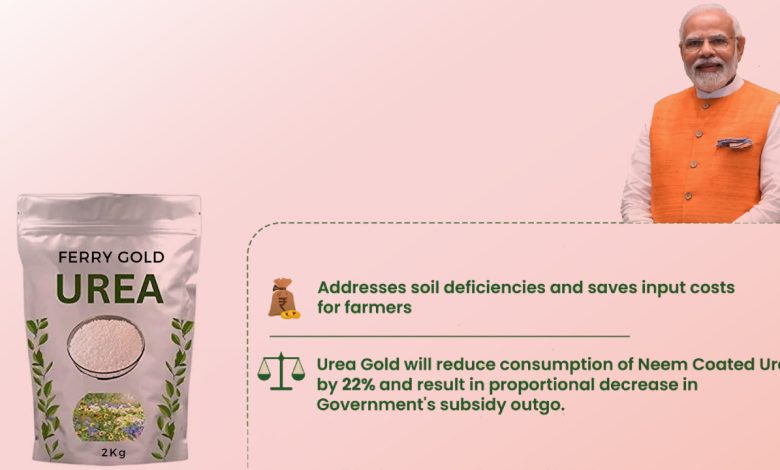
Context- The Prime Minister of India launched Urea Gold, a fertilizer developed by state-owned company Rashtriya Chemicals and Fertilizers Ltd (RCF).
Key Highlights
- Urea Gold is a type of urea which is fortified with sulphur, having 37% Nitrogen plus 17% Sulphur, while normal urea contains 46% of a single plant nutrient i.e. Nitrogen.
Objective
- Urea Gold supplies sulfur along with nitrogen.
- Indian soil lacks the sulfur needed for oilseeds and pulses, and the country is significantly dependent on imports of both.
- It aims to improve the nitrogen use efficiency (NUE) of urea.
- The urea sulfur coating ensures a gradual release of nitrogen.
Issues
-
- Urea is the most widely used fertilizer in India, with consumption/sales increasing from 26.7 million tonnes to 35.7 million tonnes in 2009-10 and 2022-23.
- The increase in urea intake raises two concerns
- Import:
-
-
- Its share of the 35.7 million tons sold in the previous financial year was 7.6 million tons.
- The raw material used for domestic urea – natural gas – is also mainly imported.
- About 75% of urea, 40% of DAP and 85% of NPKS are produced by energy sources and private companies in the country.
- The rest is imported at the expense of the Indian government (as in the case of urea) and, in the case of PandK, companies (through open lid licenses) to bridge the gap between fertilizer demand and production.
- India’s annual urea consumption of nearly 36 million tons today is second only to China’s 51 million tons, and China’s production is largely coal-fired.
-
- Nitrogen use efficiency (NUE):
-
- Only 35% of nitrogen applied through urea in India is used in crops to produce harvested yield.
- The remaining 65% of nitrogen is unavailable to plants, and much of it is “lost” by entering the atmosphere as ammonia gas or leaching underground after conversion to nitrate.
- The decline in NUE of about 48 percent in the early 1960s led to farmers using more and more fertilizers for the same crop.
Solutions:
- Fortifications
-
- A country with almost no reserves of natural gas or rock phosphate, potassium and sulfur should not encourage the use of these basic fertilizers.
- Instead, they must be covered with secondary nutrients (sulphur, calcium and magnesium) and trace elements (zinc, boron, manganese, molybdenum, iron, copper and nickel).
- The coating allows urea or DAP to be used as “carriers” to provide crops with secondary and micronutrients and improve their own N and P use efficiency through synergistic effects and controlled release, helping to reduce losses from ammonium volatilization and nitrate leaching.
- Norwegian plant food company Yara International uses patented Procote technology to cover all basic fertilizers with any trace element.
- Yara plans to launch Procote B (Boron) and Procote BMZ (Boron, Manganese and Zinc) in India, based on the same technology platform for dust-free micronutrient coating.
- Its Indian subsidiary – which has a 1.2 million tonne urea plant at Babrala in Uttar Pradesh’s Sambhal district – has launched Procote Zn for zinc oxide coating of urea in the 2022 kharif season.
- Zinc sulfate can be lost during mixing and application.
- However, Procote Zn is a palm oil based suspension concentrate that farmers can simply pour, mix and rub into the urea before application.





.png)



